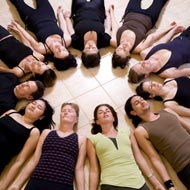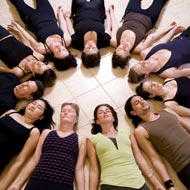Yoga Nidra - Instructions And Benefits
Sleep is the best way to recharge and rejuvenate your body. Yoga Nidra combines the rejuvenating powers of sleep with the deep reaching benefits of yoga.
The Sanskrit word Nidra means sleep. Thus the term Yoga Nidra can be translated into English as Yogic Sleep.
However, there is a subtle difference between yoga nidra and actual sleep. While in a state of yoga nidra, the yogi is not asleep. He or she has consciously and deliberately moved to a state in which the mind and body is put into the same rejuvenating trance as when asleep. However, since this is a conscious effort, the person at all times is aware of his or her surroundings. Think of yoga nidra as a way of enjoying the benefits of sound sleep without actually sleeping.
Yoga nidra was widely used in ancient India by the great sages and seers. Even Gautama Buddha utilized yoga nidra techniques in his quest for enlightenment. You can reap the benefits of this ancient technique in the modern age through the practice of yoga nidra.
Benefits of Yoga Nidra
Yoga nidra is a powerful tool for relaxation that has been used by many famous personalities including sportspersons, artists, and scientists. It is also used to treat those with air sickness especially people in the air force. It also has a strong impact on everyday life. Let us take a look at some of the benefits of yoga nidra and how they can help you.
- Just like any other machine, the mind also needs to switch off in order to rejuvenate and repair itself. By performing yoga nidra meditation, you allow your mind to truly relax and stop the internal dialogue that goes on inside the subconscious mind all the time.
- The practice of yoga nidra also allows you to lower your heart rate. As you are relaxing your body at the same time, the blood vessels also dilate and blood is pumped to all the cells of the body. Thus your entire body gets relaxed and nourished at the same time.
- Nidra yoga techniques also allow your muscles to relax. Thus all the pent up stress, stiffness, and stress is released from the muscles and you wake up feeling truly refreshed.
- Stress is the single biggest cause behind most ailments in modern life. Yoga nidra is one of the most effective techniques to relieve stress, be it mental or physical.
Stress relief is one of the most important benefits of yoga nidra. Regular practice of this technique allows you to deal with day-to-day stresses effectively and thus enables you to live a more productive and healthy life.
- The practice of yoga nidra also helps to recharge the nervous system and improves the functioning of the endocrinal system.
- One off the other important benefits of yoga niddra is that it makes you more aware of yourself and helps you to relate the self to the rest of the world. These spiritual benefits are not dependent on religious beliefs and a person of any religious view or faith can become more spiritual through the practice of yoga nidra.
Yoga Nidra Instructions
Nidra yoga techniques are advanced meditation techniques and can only be practiced after one has obtained proper yoga nidra training. It takes a certain amount of skill and practice in order to master nidra yoga techniques.
Yoga nidra is usually performed in the Shava Asana or the Corpse Pose. Lie down on your back on the floor or a comfortable yoga mat. It is important to pick a place that is comfortable, well ventilated, and free of external noise and distractions. The palms of your hands should be facing upwards and your feet should be slightly apart.
Concentrate on slowing down your breath and then slowly focus on each individual part of your body starting from your feet till you begin to feel it relax. Once a particular part off your body is relaxed, move on to the next part. Continue to work your way upwards. With a little practice, by the time you approach your head, you will be almost ready to slip into yoga nidra. If you are new to this meditation technique, you might find that you fall asleep when you practice yoga nidra. However, with some practice you will soon be able to master the art of falling into deep conscious yogic sleep.
Once you have worked your way to your forehead, focus on an imaginary point on your forehead and continue to breathe slowly and deeply. Now shift your inner gaze to your throat and concentrate on that area for some time. Next, shift your inner gaze to your chest and empty your mind of any distracting thoughts and focus on your breath. When your thoughts come rushing back to you, it is time to exit yoga nidra.



